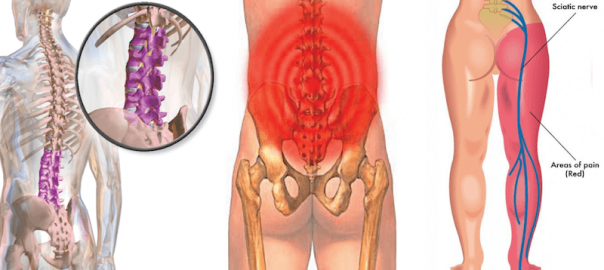Back pain comes in all shapes and sizes. It can flare up immediately after an injury or appear slowly and mysteriously over a period of months. It might be sudden and short-lived (acute) or long-lasting (chronic).
Over-the-counter medicines help with some types of back pain, but only powerful drugs and surgery can fix others.
Sometimes it’s hard to identify the source of your back pain, but other times you can pinpoint it easily. Sciatica is one of those that’s pretty simple to identify. Home remedies can work fast, so you might not even have to call a doctor.
As many as 4 out of every 10 people will get sciatica, or irritation of the sciatic nerve, at some point in their life. This nerve comes from either side of the lower spine and travels through the pelvis and buttocks. Then the nerve passes along the back of each upper leg before it divides at the knee into branches that go to the feet.
Anything that puts pressure on or irritates this nerve can cause pain that shoots down the back of one buttock or thigh. The sensation of pain can vary widely. Sciatica may feel like a mild ache; a sharp, burning sensation; or extreme discomfort. Sciatica can also cause feelings of numbness, weakness, and tingling.
Pain may be made worse by prolonged sitting, standing up, coughing, sneezing, twisting, lifting, or straining. Treatment for sciatic pain ranges from hot and cold packs and medications to exercises and complementary and alternative remedies.
Medications for Relief of Pain From Sciatica
Several types of medications may be used for sciatic pain. Oral medications include:
- Over-the-counter pain relievers such as acetaminophen, aspirin, or NSAIDs (such as ibuprofen [Advil, Motrin], ketoprofen, or naproxen[Aleve])
- Prescription muscle relaxants to ease muscle spasms
- Antidepressants for chronic low back pain
- Prescription pain medications for more severe pain
Do not give aspirin to a child aged 18 years of age or younger because of the increased risk of Reye’s syndrome.
In some cases, a steroid medication is injected into the space around the spinal nerve. Research suggests these injections have a modest effect when irritation is caused by pressure from a herniated, or ruptured disc.
Physical Therapy for Sciatica
Sciatica pain may make it difficult to be active. But bed rest is not recommended as a mainstay treatment. To manage new sciatica pain, you may find that certain positions and activities are more comfortable than others.
If symptoms are not severe but persist beyond a couple of weeks, your doctor may recommend physiotherapy in Dwarka. The proper exercises may actually help reduce sciatic pain. They can also provide conditioning to help prevent the pain from coming back.
The exercises recommended by the physiotherapist in Dwarka will depend on what’s causing sciatica. It’s important to work with a specialist who has experience working with people with sciatica. It’s also important to do the exercises exactly as directed.
To get the proper direction, you will most likely work with one of the following specialists:
- Physical therapist
- Physiatrist — a doctor who specializes in physical medicine

